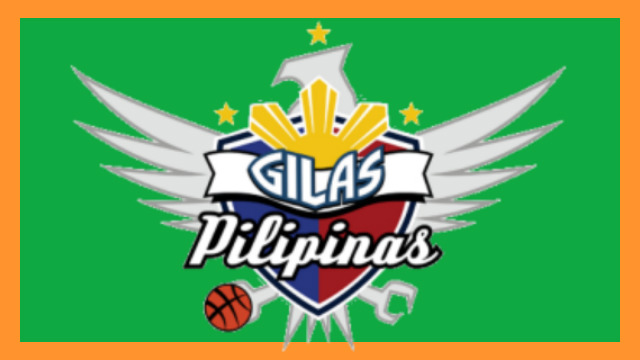The formation of our National Basketball Team and its final outcome since 1976 has been, is, and will always be unsatisfying because the stakeholders have to protect the professional aspect of the game.
The Samahang Basketboll ng Pilipinas is right; the Philippines should be represented by the best of the best. But the Philippine Basketball Association is also right; the cramming formation of the national team should not jeopardize its teams’ competitiveness and the itinerary of events. It is a simple case of “one cannot serve two masters at a time”.
Take a quick look at the case of Alaska in 1998. They were primed to take a stab at the league’s supposed fourth grand slam but also had to give way to national duty. In the end, both the grand slam for Alaska and the Asian Games for the Centennial Team were lost.
Alaska realistically should have two grandslams. The Milkmen were dominant during the first two conferences during this year but kinda gave up the chance to take home the Governor’s Cup jewel by “loaning” Jojo Lastimosa, Johnny Abbarientos, Kenneth Duremdes and Coach Tim Cone to the National Team. That leaves only Sean Chambers to carry the cudgels for the embattled Milkmen’s chase, virtually handing the crown to the opposition on silver platter.
The Centennial Team, on the other hand, did not get enough preparation primarily because of the PBA. Cone was busy with Alaska for the first two conferences and only got to totally focus with the national team after the end of the second conference. That goes the same with the players who were still reporting for duty to their PBA mother teams for the first two conferences. Such ill-preparedness apparently reduced the potency of teamwork and team chemistry of the national team and again had to rely on individual talent to deal with the opposition.
While the team got the Jones Cup gold, they were not as successful in the Asian Games. They were whipped badly by South Korea, 83-103, in the quarter-finals and were ousted from the championship by China, 73-82, in the semis. It was individualism that got them through where Lastimosa’s late-game one-on-one heroics lead them in surviving a gritty challenge by Kazakhstan, 73-68, and avoid total disaster of coming home medal-less.
The way I look at it, the problem on the formation of the team may not be properly identified and the PBA might hold the key. I think the best way to solve it is to marry commercialization with patriotism instead of fighting it.
PBA is right now is a world of its own. Most Filipino collegiate cagers dream of playing in the PBA someday and think that reaching the PBA is the pinnacle of success in a basketball career. It should not be. The NBA and the Olympics are arenas still unconquered by us and I think we got the tools to make it even we are generally small. While current Boston Celtic Isaiah Thomas, Spud Webb and Nate Robinson are one of a kind small men and hard acts to follow, Filipinos can definitely duplicate what Muggsy Bogues, JJ Barea, Jason Terry, Earl Boykins, Eddie House, among others. It is just a matter of really putting the right effort and attitude while overlooking that the PBA is the last stop towards basketball excellence.
I could never forget the time when the possibility of the Flying A wearing a Utah Jazz jersey during the height of Alaska’s 1996 success was brought out. Utah would figure in the finals during those years. Just think about what it would have done to Philippine basketball had it became real. We saw what Manny Pacquiao did to Philippine boxing because of his success in the US.
Abbarientos was invited to the Charlotte Hornets training camp but for some reason did not accept the invitation and never attended the camp. As an Alaska fan then, I would have been devastated by the loss of the Flying “A” then but might be happy now for what it would resulted today had tried it out and eventually made it in the NBA.
For all of our passion for this game, we are still searching for the first full-blooded Filipino to play in the NBA and we are still to get back to the Olympics since the PBA was born. The PBA should think outside of the box and grow as a league.
My take is a “wild PBA-wide idea” to form the national team. All PBA teams should find a way to sponsor the National team as a regular PBA member and gave the team the same rights given to a regular team, except probably in drafting players.
For instance, they could pool resources to a common fund and use it to spend the salaries of national team players and the coaching and management of the team. In return for the resources spent, they should find a common agreement on how each team brand can be bannered by the national team. Rotation, perhaps. Or simply having the team carry the PBA brand.
To assemble the team, a dispersal draft will be conducted. The new team can select any player from the 12 PBA teams and assume the contracts of some 15 players. This should, more or less, guarantee that the best of the best will be part of the National team. This is the initial team. To level the playing field, or even give the nationals better challenges, the idea of getting Asian imports will be applied in the All-Filipino Conference for the other teams. For the Commissioner’s and the Governor’s Cups, the hiring of imports should be increased to two.
Subsequently, the National team can trade players with the other commercially sponsored teams, negotiate contract extensions with its current players and draft incoming collegiate players. With respect to drafting of players, the national team should have first crack at all draftees to fill-up their 15-man line-up with the best players available. So, for every player they will draft, another would have to be released. The player that would be released is then included in the regular draft, although already not a rookie. The teams drafting them will have to assume their contracts signed with the national team.
After the national team has finished drafting, the rest of the teams will draft using the current drafting rules, the only difference is the presence of the discarded national players in addition to the rookies made available for the other teams.
In this manner, the National Team members gets more training as a team, have a chance to fight for a PBA crown, and get sky-high salaries while representing our country. On the other hand, the PBA, as a whole, does not loss any of their valuable returns as their calendar of activities will still continue without disrupting the composition of the individually sponsored teams with the National team going on a leave of absence to attend international competitions. Not only that, chances of being noticed abroad will definitely increase with more foreign breed player presence.
I just don’t know how far this crazy idea can be feasible given the complexity of the professional game. It is, after all, just a “not too outrageous playful” idea. Let me know of your ideas in the comment section if you got one.
By: ARMANDO M. BOLISLIS














